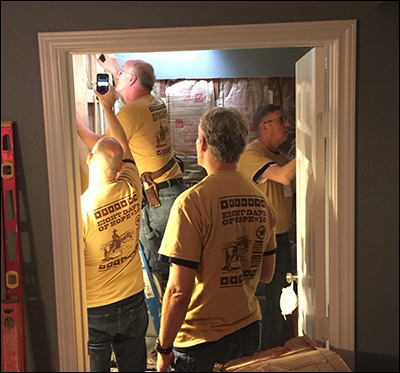In August 2017, Hurricane Harvey made landfall in Southeast Texas, devastating much of the Houston area with high winds and flooding. At the time, Digital Check pledged to donate $1 to Harvey relief efforts for each new scanner we sold through the end of that year – eventually amounting to tens of thousands of dollars.

Why did we pick these two charities specifically? One reason was that we wanted to find organizations for whom our contribution could make a noticeable difference. The “standard” thing to do would have been to simply write a check to the Red Cross or Habitat for Humanity and be done with it.
Let’s be honest, though: We’re not a giant corporation making million-dollar contributions. While those organizations are certainly appreciated by all those affected, our five-figure donation would be a rounding error by comparison.
So, for a company our size to make its contribution really count, we looked for local and regional organizations who depend on the kind of support, both monetary and otherwise, that we could offer. These charities have specific projects that you can “see” and “touch,” helping individual homeowners and businesses get back on their feet long after the floodwaters have receded.

One thing that’s striking as you drive through the neighborhoods is how “normal” everything looks from the outside – houses still standing, a solitary dark waist-high line on some of the buildings serving as the only external indicator that anything is out of place.
Once you get inside the homes, you see how misleading that is. In this particular house that we are working on, we’re trying to get the bathroom plumbing hooked up so the water can be turned back on, an important step toward making the house habitable again. The older wood inside the wall framework shows where the high-water mark was; everything below about knee height is new, as is the flooring, the drywall, the electrical outlets, and the appliances. It looks as if the entire bottom three feet of the house has basically had to be rebuilt in place, a huge undertaking by any standard.
The house next door appears normal from the outside as well, but volunteers from 8DOH are inside hard at work there, too. Repeat this scenario in your mind for each building for miles in every direction, and only then do you begin to get an idea of the scale of the disaster with which you are dealing.

Eventually, we get the bathrooms re-piped and the water turned back on, a leaky shower valve being the only mishap. With any luck, the family will be ready to move back within a week or two. That evening, all the workers reunite at the same church from earlier that day to have dinner. They hear from some of the homeowners about what these investments of time, talent, and resources means to them as they hope to soon be back in their restored homes. It is encouraging to see the people who are being directly impacted by this effort.
The next project is a house closer to downtown; since it was outside the usual flood zone, the SBP team leader explains, the owners didn’t have flood insurance, like many in the area. Despite being elevated on concrete supports, the house was flooded and needed to essentially be gutted and restored. There’s still no water or electricity, so all the lighting and tools must be plugged into portable battery packs. Today we’re helping to lay flooring; after we’re done, another team will install fixtures and counters, finish the plumbing and electrical work, and finally move in furniture. This family is much further from moving back in.
As we’re finishing up with the living room floor, the SBP team leader explains that the process of fully rebuilding from a hurricane takes years, not months. It’s a fitting message to end our project.

In other words, the beginning of the process gets all the attention, but the rest is no less urgent. In fact, finishing the job might be the hardest part, since so many people have moved on to the latest emergency in the news. But if everything gets halfway done, nothing gets all the way done.
Just as we preferred to give our time and money to organizations with “hands-on” results, we also think it’s important to see things through. That is perhaps the most important message from our Hurricane Harvey relief efforts, and one that we hope will inspire others in the future.





